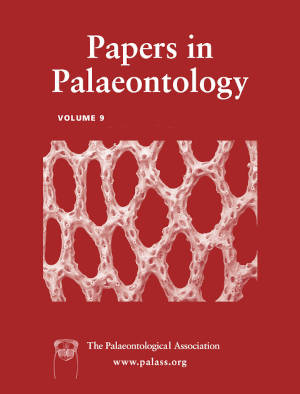Article: Caviomorphs (Rodentia, Hystricognathi) from Pampa Castillo, Chile: new octodontoid records and biochronological implications
Publication: Papers in Palaeontology
Volume:
9
Part:
1
Publication Date:
2023
Article number:
e1477
Author(s):
Andrew J. McGrath, John J. Flynn, Darin A. Croft, Jennifer Chick, Holly E. Dodson, and André R. Wyss
DOI:
10.1002/spp2.1477
Abstract
Abstract Caviomorph rodents have been diverse and abundant components of South American mammal communities since the late Eocene. We describe herein the octodontoids of Pampa Castillo, a Lower Miocene site in southern Chile (Aysén Region). Six genera and seven species of octodontoids are present, two of which are new: Dudumus berggreni sp. nov. and Caviocricetus guenekko sp. nov. The octodontoids from Pampa Castillo support assignment of this fauna to the Santacrucian South American Land Mammal Age (SALMA), which is consistent with previous studies. We conducted similarity analyses on 11 Early–Middle Miocene Patagonian rodent faunas using hierarchical clustering. Faunas generally fell into the three SALMAs to which they were traditionally assigned: Colhuehuapian, Santacrucian and ‘post-Santacrucian’. The ‘Pinturan’ is a proposed biochronological interval between the Colhuehuapian and Santacrucian. At the genus level, Pampa Castillo clustered with ‘Pinturan’ faunas, while at the species level it clustered with the ‘typical’ faunas on which the Santacrucian SALMA is based (from outcrops of the Santa Cruz Formation along the Atlantic coast and Río Santa Cruz). The Pampa Castillo rodent fauna resembles both ‘Pinturan’ and ‘typical’ Santacrucian faunas in taxon distributions, reflecting complex temporal and palaeoenvironmental influences. Geochronological data indicate that some ‘Pinturan’ sites overlap temporally with Pampa Castillo and the upper Pinturas Formation, which both clustered with ‘typical’ Santacrucian faunas. These results indicate that the ‘Pinturan’ does not represent a distinct biochronological interval, but that the differences between it and ‘typical’ Santacrucian faunas are attributable to geographic or palaeoenvironmental differences.
